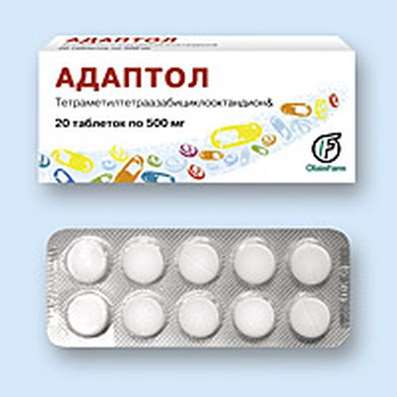What you not know about peptide hormones?
12 Apr 2017
What you did not know about peptide hormones
When the amino acids are combined into a chain, a linear protein macromolecule is formed. In any living organism, there are thousands of proteins that perform a variety of functions. In order to give an idea of the variety of proteins, a general view of molecules (with respect to the shape and size) of a number of extracellular and intracellular proteins is given in the scheme with an increase of about 1 x 1500000. The functions performed by proteins are distributed approximately as follows:
- Structure-forming functions.
Structural proteins are responsible for maintaining the shape and stability of cells and tissues. As an example of a structural protein, a fragment of the collagen molecule is presented on the diagram. At a given scale, an entire collagen molecule measuring 1500000-300 nm would occupy three pages. Structural proteins can also include histones, the function of which is the organization of DNA packing in chromatin. Chromatin structural units, nucleosomes, consist of an octameric complex of histones on which a DNA molecule (DNA) is wound.
- Transport functions.
The most well-known transport protein is hemoglobin of erythrocytes (left bottom), responsible for the transfer of oxygen and carbon dioxide between the lungs and tissues. The blood plasma contains many other proteins that perform transport functions. Thus, prealbumin tolerates thyroid hormones - thyroxine and triiodothyronine. Ionic channels and other integral membrane proteins transport ions and metabolites through biological membranes.
- Protective functions.
The immune system protects the body from pathogens and foreign substances. The key component of this system is immunoglobulin G, which forms a complex with membrane glycolipids on erythrocytes.
- Regulatory functions.
In biochemical signal chains, proteins function as signaling substances (hormones) and hormonal receptors. As an example, a growth hormone (somatotropin) complex with an appropriate receptor is provided herein. In this case, the extracellular domains of two receptor molecules bind one molecule of the hormone. Binding to the receptor activates the cytoplasmic domains of the complex and thereby provides for further signal transmission. In the regulation of metabolism and the processes of differentiation, DNA-associating proteins (transcription factors) play a decisive role. The structure and functions of protein-activators of catabolism and other bacterial factors of transcription have been studied in detail.
- Catalysis.
Among the 2000 known proteins, the most numerous group is made up of enzymes. The lowest molecular weight of them are mol. Weight 10-15 kDa. Proteins of medium size, such as those listed on the alcohol dehydrogenase scheme, have a molecular mass of 100-200 kDa. The molecular weight of high molecular weight enzymes, which includes glutamine synthetase, built from 12 monomers, can reach 500 kDa.
- Motor functions.
The interaction of actin with myosin is responsible for muscle contraction and other forms of biological mobility. The myosin hexamer (left), 150 nm long, is one of the largest proteins. Filament actin (F-actin) is formed by polymerizing relatively small molecules of globular actin (G-actin). The reduction process is controlled by the associated with F-actin tropomyosin and other regulatory proteins.
- Spare functions. The plants contain spare proteins, which are valuable nutrients. In animal organisms, muscle proteins serve as reserve nutrients that are mobilized when absolutely necessary.
2) A significant increase in growth hormone is found during sleep (regardless of the time of sleep, be it at night or in the daytime).
3) As soon as a person falls asleep, the growth of production of this hormone is fixed.
4) During sleep, the greatest release of growth hormone is observed in the first 2 hours. On the basis of the second, third and fourth thesis, we can conclude that the recommendation to sleep at least 2 times a day has a serious biological justification. Daytime sleep (1-2 hours) leads to a marked increase in the secretion of growth hormone. The more once a day you sleep, the higher the hormonal background. You can also like Honluten.
5) Myth is the opinion that at night the muscles are destroyed allegedly due to catabolism. This myth gave birth to the following fiction about the need for a night snack. In fact, at night, the secretion of growth hormone at a height, which increases muscle anabolism (as well as body length growth in young years). At the same time, under the influence of the secretion of growth hormone, the main energy exchange is carried out at the expense of fats, and not carbohydrates and proteins (as in the day). Therefore, nocturnal catabolism is observed only in adipose tissue, but not muscular. At night, muscles feed on fatty acids from fat stores that do not allow muscle fibers to break down, and no night snack is needed for this. For the same reason, there is not much point in snacks before going to bed. This need has been established in the minds of athletes thanks to marketers who have untwisted casein protein. Moreover, food before bedtime, as a rule, prevents timely sleep and a good sleep.
6) Growth hormone is stimulated by protein nutrition. The more proteins, the higher the production of the hormone. The secretion of growth hormone is higher the faster the protein products enter the blood. We are talking about the so-called fast proteins - powdered proteins, boiled egg whites, lean fish, low-fat cottage cheese, skim milk. The production of growth hormone is inhibited, the more in the diet of fast carbohydrates (confectionery, sweets, fresh white bread, etc.) and saturated fatty acids (bad fats). Therefore, do not use fast carbohydrates and fatty foods before bedtime, when a surge of this hormone is expected. This is what is known to date reliably. However, the influence of nutrition on the production of growth hormone also has conflicting facts. In particular, according to one scientific study, the daily secretion of growth hormone is lower with rare meals (2-3 times a day) compared with frequent fractional meals. According to other scientists, a long period between meals (we are talking about periodic starvation) is a powerful stimulant for the release of growth hormone. In general, this issue remains open.
7) The synthesis of growth hormone is enhanced by training with weights. In principle, any intensive physical work - sprinting, fast cycling, swimming, etc. - can increase the release of this hormone. If we talk about bodybuilding, then the so-called anaerobic training (heavy weights for 8-12 repetitions) surpasses the aerobic power (relatively light weights by 15 and higher repetitions) and pure power (maximum and submaximal weights by 1-5 repetitions) to stimulate the release of the hormone Growth. On the contrary, strength training best activates the production of testosterone, the most important anabolic hormone. One should not forget that prolonged training inhibits the secretion of any anabolic hormones, including growth hormone. Therefore, do not exercise for more than an hour, especially if you have a lower level of this hormone.
8) The secretion of growth hormone depends on age. At the age of 20-25 years it is maximal. Then there is a gradual decrease in the secretion of this hormone. The lowered level of growth hormone in middle and older age is one of the reasons for the appearance of excess weight and the gradual degeneration of muscle fibers. For the same reason, to fight excess weight and to grow muscle is more difficult than the older person.
Conclusion. Sleep, nutrition and exercise are the most important factors in the active secretion of growth hormone. The raised hormonal background is a pledge of a muscle anabolism and absence of muscular catabolism.

 Cart
Cart





